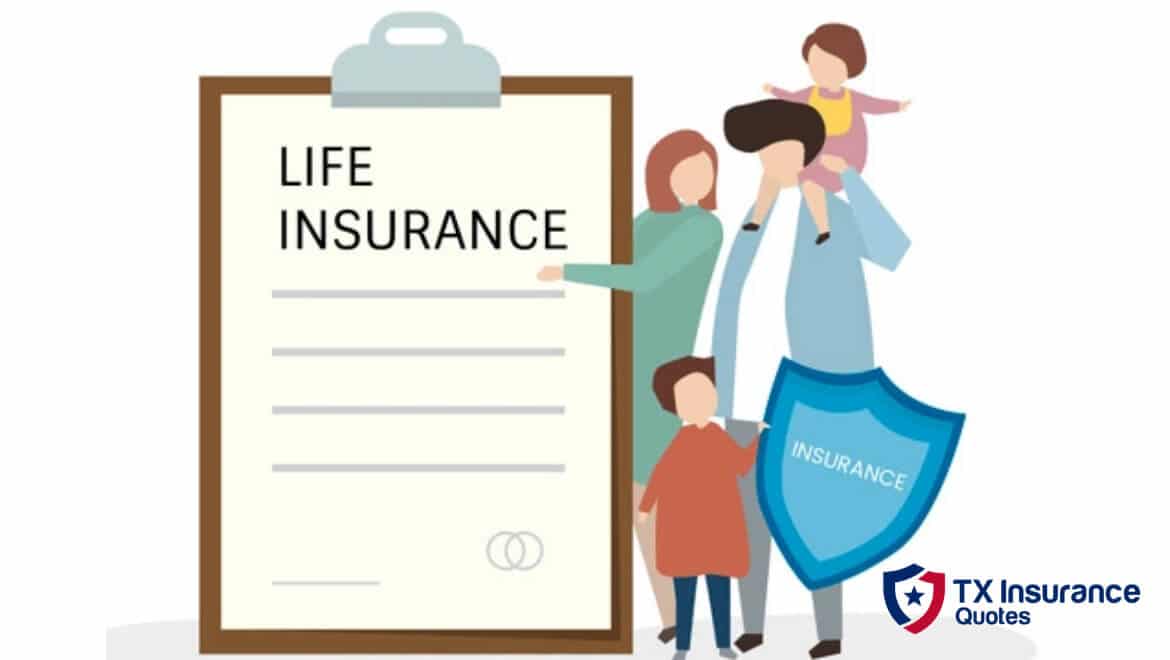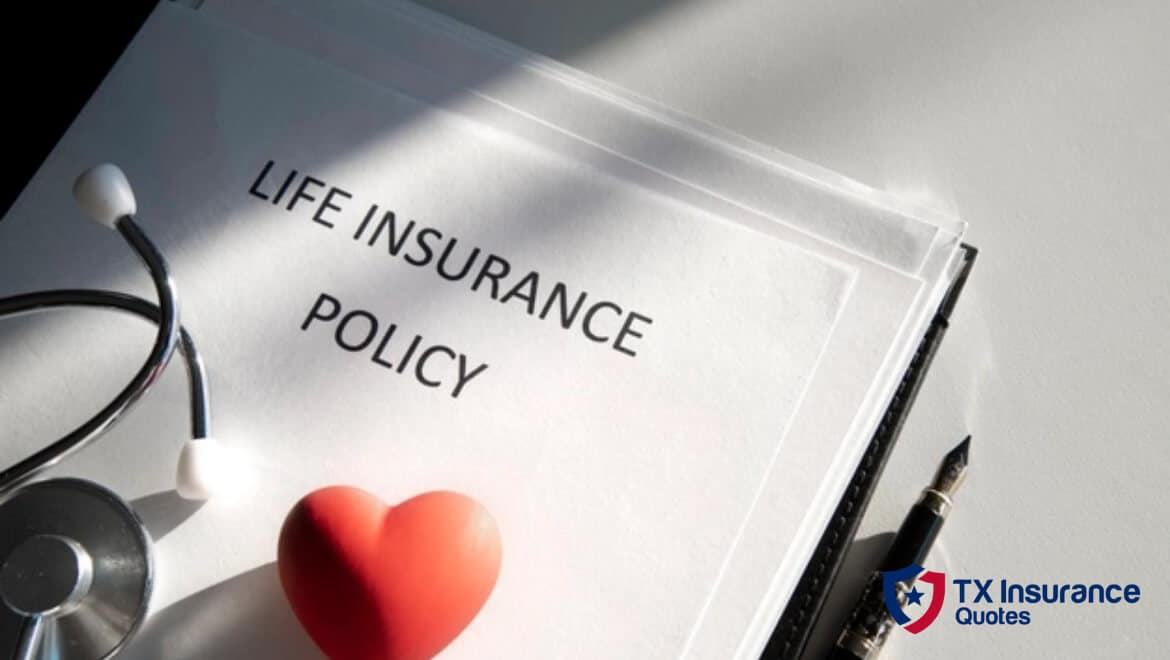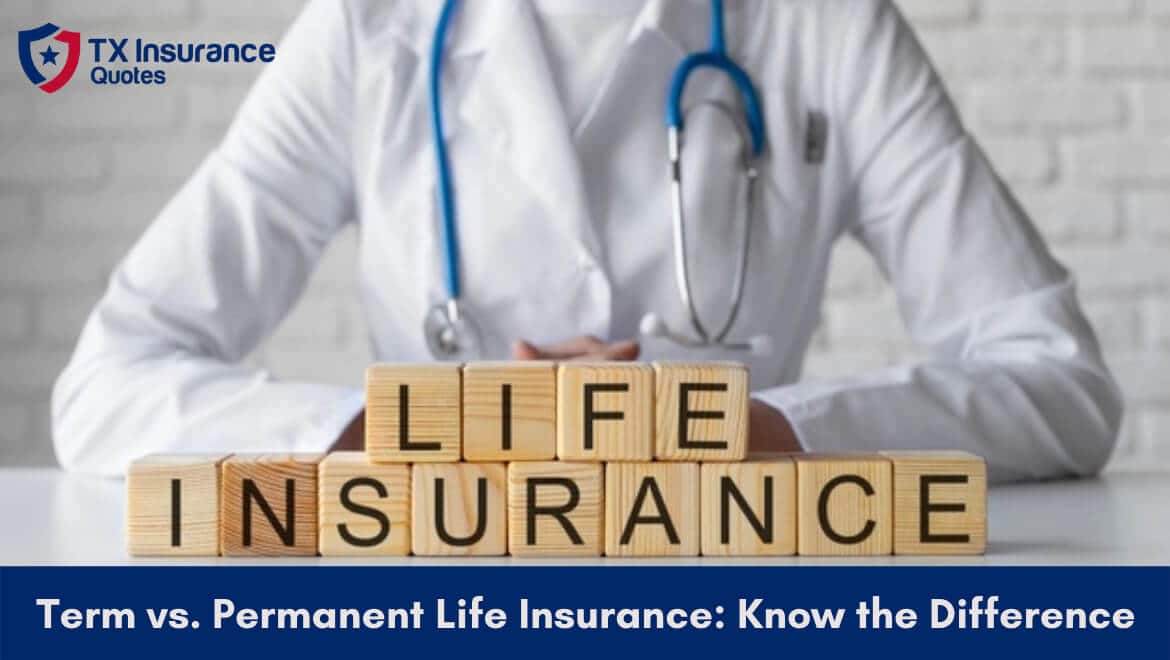Introduction
Life Insurance is designed to protect you and your loved ones financially in the event of your death. The peace of mind you get from knowing your family will be taken care of financially is so valuable.
However, with all the different kinds of policies that life insurance companies in Texas offer, it can be challenging to determine which option works best for you. If you buy a policy without doing prior research, you may end up purchasing the wrong policy. Which, in turn, may not provide the benefits you and your family need to feel financially secure.
To make things easy for you, we will explain the two main life insurance policies: Term and Permanent. We will also help you understand the difference between the two so you can make an informed decision about which one to purchase. Let’s get started!
What is Term Life Insurance?

Term life insurance acts as a temporary solution to your life insurance needs. It provides coverage for a designated period of time, generally between one and thirty years. Once the term expires, you will have to renew the policy or buy a new one.
If you were to pass away during the term of your policy, your beneficiaries would receive the agreed-upon benefits of the policy. If this is not the case, the policy will end, and you will need to renew.
Generally, the premium of term life insurance policies is much lower than Permanent policies. However, this depends on your age, health condition, smoking and drinking habits, etc. The premium of a term policy can be as low as 1%-3% of your annual income.
However, unlike Permanent Life Insurance, Term Life Insurance does not build any cash value. Once the policy expires, it ceases to exist unless you opt for the return of premium rider, where you will get back the premiums you have paid minus any claims.
Below are the different types of Term Life Insurance available:
Annual Renewable Term Insurance (ART):
With this kind of term life insurance policy, you renew your coverage every year. The price is based on your current age and health condition. Therefore, your premium will increase as you continue to age.
Level Term Insurance:
With this kind of term life insurance policy, you pay the same premium for the entire term. The only thing that changes with time is your coverage. This can be ideal if you are on a fixed income and want to control how much money you spend on your premiums.
Decreasing Term Insurance:
In this policy, the death benefit decreases as time goes on. The idea behind it is that you purchase enough coverage to cover your mortgage or other debts so that your loved ones do not have any financial hardships.
Convertible Term Insurance:
This type of term life insurance policy can be converted to a permanent life insurance policy without going through the underwriting process. This means that your health condition will not be a factor in converting the policy.
Renewable and Convertible Term Insurance:
This policy combines the features of both Annual Renewable Term and Convertible Term policies. You can renew it every year, and you have the option to convert it to a permanent life insurance policy without having to go through underwriting.
Who Should Consider Term Life Insurance?
Term life insurance is not for everyone. In fact, it is not everyone’s first choice when it comes to life insurance. However, there are some instances where it can be a good option:
- You need life insurance for a specific period of time, such as until your children finish college or you pay off your mortgage.
- You are in good health and want low premiums.
- You want to protect your family against an unexpected death, and you are not interested in building cash value.
Learn the importance of buying life insurance in your 20s.
What is Permanent Life Insurance?

As the name suggests, permanent life insurance policies are designed to provide coverage for your entire lifetime. As long as premiums are paid, the policy will stay in effect. This type of policy also has a cash value that builds over time. The cash value can be accessed (and used) by the policyholder during their lifetime.
Some people choose to use the cash value of their permanent life insurance policy as collateral for a loan. Others may choose to borrow against it to finance other ventures.
Unlike a term insurance policy, the death benefits associated with permanent policies are not based on expiration dates but remain in place until the insured individual passes away. So if you buy a 20-year permanent life insurance policy, it will provide coverage for 20 years, even if you are still alive after the term expires.
Permanent life insurance is generally more expensive than term life insurance because of its longer terms and additional benefits. Below are the three types of permanent life insurance policies:
Whole Life Insurance:
The most common type under permanent life insurance is Whole Life Insurance. This provides lifetime protection and accumulates a cash value at the same time. It also has more flexibility than other types of permanent coverage, such as universal or variable universal life. Cash values vary depending on interest rates, the company issuing the policy, and other factors, but they typically start around $1,000.
Universal Life Insurance:
Universal life insurance is also a permanent coverage option, allowing for more flexibility than whole life. Premiums can be changed (increased or decreased) depending on the policyholder’s needs, which gives you some added control over your coverage. The cash value of a universal life insurance policy also varies depending on the interest rates and other factors but typically starts around $2,000.
Variable Universal Life Insurance:
Variable universal life insurance policies are the most flexible type of permanent life insurance. They offer the same death benefits as a whole and universal policies, but you’ll have a lot more control over how your premiums and death benefit are structured. Your premiums will be based on the performance of the investment accounts that come with your policy, which means you have to take on additional risks if you want greater potential returns. These policies’ starting cash values range from around $1,000 to $2,000.
What’s the Difference Between Term and Permanent Life Insurance?
There are many differences between term and permanent life insurance. Still, the most important thing to remember is that while both can provide you with coverage for your family in the event of your death, they each have different purposes.
The first step is to identify your family’s needs and what you want your life insurance policy to accomplish. Next, think about how long you need coverage, what you can afford to pay in premiums, and whether you want to build cash value. From there, you can decide which type of life insurance policy is best for you.
Comparing life insurance quotes is a great way to find a policy that meets your needs and fits your budget.
Conclusion
In a nutshell, life insurance should supplement your family’s income and protect them in the event of your death. The type of policy you choose will solely depend on your needs and budget.
If you are still unsure what type of life insurance policy is best for you, consider reaching out to TX Insurance Quotes. We are more than happy to answer any questions you may have and help you compare term vs. permanent life insurance to make an educated decision.
Contact us today for a free Life and Homeowners insurance quote.


